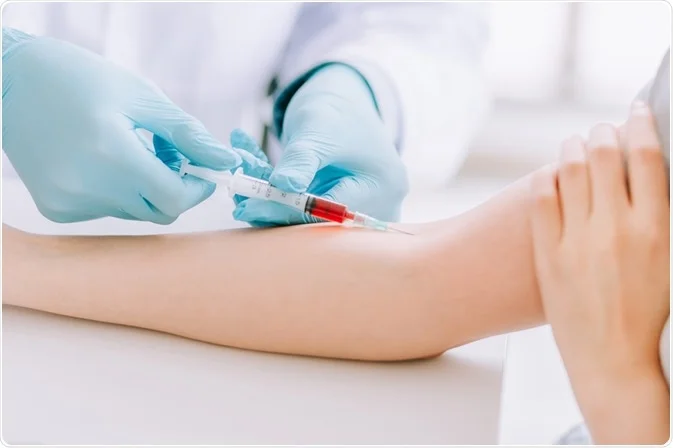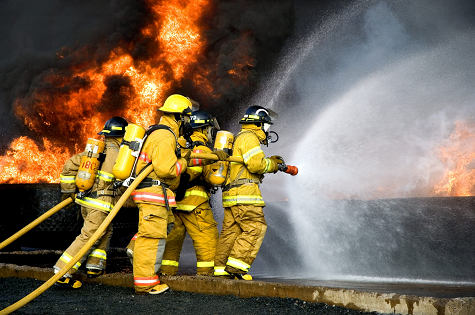Unit 9: Lesson 3: Common Safety Issues
Lesson 3: Common Safety Issues

Lesson 3: Common Safety Issues
Workplaces, including healthcare settings, face several standard safety issues. Some issues, such as bloodborne pathogens or the risk of infection, are of more significant concern in healthcare settings because of the tasks and nature of the work and setting.
Blood
One common safety issue is the handling and disposal of blood. Bloodborne pathogens are microorganisms that cause human disease and illness and are transmitted by contact with contaminated blood. Diseases such as HIV and Hepatitis B are examples of bloodborne pathogens. Infection can occur when one person's contaminated blood (or bodily fluids) is introduced to another person's blood or bodily fluids. Transmission can occur through open cuts and wounds, being punctured or scraped by a contaminated item, sexual contact, or indirectly for illnesses like Hepatitis B when a person touches contaminated fluids and then touches their eyes, mouth, or nose.
Venipuncture procedure
Not surprisingly, healthcare workers are one of the groups identified by OSHA as being most at risk for this safety hazard. Think about a hospital setting. Bloodborne pathogens could be transmitted if a contaminated needle accidentally punctures a doctor or nurse, or a sanitation worker could be exposed by touching contaminated linens, trash, or other items without protection. While bloodborne pathogens present a risk in healthcare settings, there are steps that employees and organizations can take to reduce the risk.
Reducing the safety hazard of bloodborne pathogens begins with education. All staff members need to have training in how to lower their exposure risk an,d learn the organ-learns exposure plan, which outlines actions to be taken if exposure occurs. Precautions for this type of safety hazard include:
- Treating all blood and bodily fluids as though they are contaminated. The CDC argues that staff members should be consistently protected from exposure, and this should reduce the risk of contamination.
- I am using protective equipment and clothing. This may include specially engineered disposal receptacles for used needles, disposable gloves, eye protection, and other personal equipment specific to the healthcare setting.
- They are adhering to safe behavior protocols. Employees can help reduce their own risk by using behaviors that will decrease their chance of exposure. They can wash their hands after removing gloves, keep food and drink away from areas that may be contaminated by blood, protect their open wounds, and be careful with any materials that may contain infectious pathogens.
- Keeping healthcare areas clean. Decontaminating any surfaces that may have come into contact with infectious materials and promptly cleaning up any blood spills can help reduce the risk of exposure.
If exposure does occur, people still can take steps to help minimize their risks. Washing an exposed area with soap and water (or flushing out the eyes, nose, and mouth) is the first step after any possible exposure. On-the-job exposures should then be reported to the appropriate person within the organization, and any immediate medical actions can be taken. Healthcare settings may test the blood for any pathogens, if possible, and the exposed employee's blood may also be tested. In some cases, counseling may be provided.
Fire
Fire is another significant risk for health science settings. Potential ignition sources include people smoking in the building, faulty equipment, electrical problems, etc. Any fire in a healthcare setting is potentially dangerous. Still, this danger increases in facilities such as hospitals and nursing homes, where individuals are often unable to move away from the threat. Health science professionals working in these types of sites need to be mindful of how to reduce the risk of fires and what to do if one does occur.

Preparation is an essential factor in fire safety. All employees should be aware of the emergency plan for their particular site. This may include the location of emergency exits, how and in what order the patients should be evacuated, and how to shut off machines within the site. Healthcare professionals need to know where fire extinguishers are located, how they are used, and where the fire alarms are found in the building.
Emergency responders recommend that healthcare professionals 'RACE' against the fire. This includes:
- Rescue: the first step should be to rescue any individuals directly in danger from the fire. This may include patients and other healthcare professionals. Since patients may not be able to move themselves out of harm's way, healthcare professionals should be trained to help move them away from smoke and fire dangers.
- Activate: fire alarms should be activated as soon as possible to alert others to the danger. If anyone is in immediate danger from the fire, healthcare professionals should rescue them before finding an alarm.
- Confine: the fire should be confined as much as possible while waiting for emergency responders. Closing doors can help reduce the spread of fire and smoke. Patients may be safer from smoke inhalation risks when placed in rooms behind closed doors than in hallways where smoke can spread.
- Extinguish: if the fire is small, healthcare professionals can attempt to extinguish it using a fire extinguisher.
By keeping this acronym in mind, healthcare professionals can be prepared to handle a fire if one should occur.
